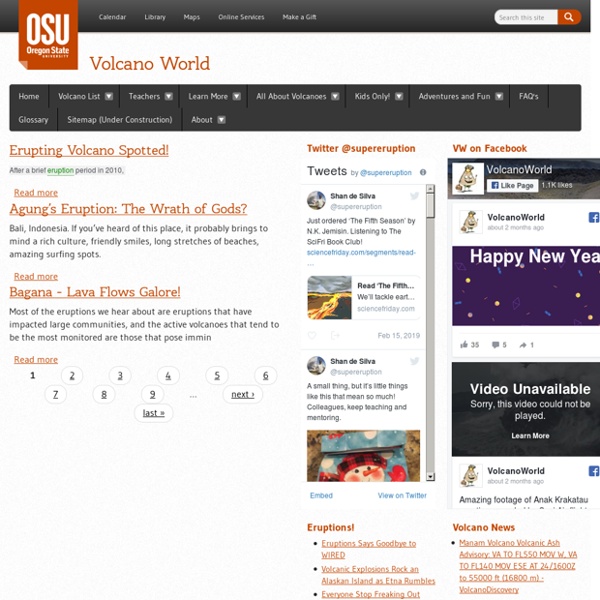Your World is Erupting

World Sunlight Map
Watch the sun rise and set all over the world on this real-time, computer-generated illustration of the earth's patterns of sunlight and darkness. The clouds are updated daily with current weather satellite imagery. The Mercator projection used here is one way of looking at the spherical earth as a flat map. Used since the 16th century for navigation, straight lines on this map can be used accurately as compass bearings but the size and shape of continents are distorted. Compare this with Peters, Mollweide or equirectangular projection maps. Also available is a semi-realistic view of dawn and dusk from far above the Earth, a look at the moon, and information about how this works.
Volcano Hazards Program
List of large volcanic eruptions in the 21st century
This is a list of volcanic eruptions of the 21st century measuring a Volcanic Explosivity Index (VEI) of at least 4, as well as notable smaller eruptions. Note that the size of eruptions can be subject to considerable uncertainty. See also[edit] References[edit] External links[edit]
Related:
Related:



